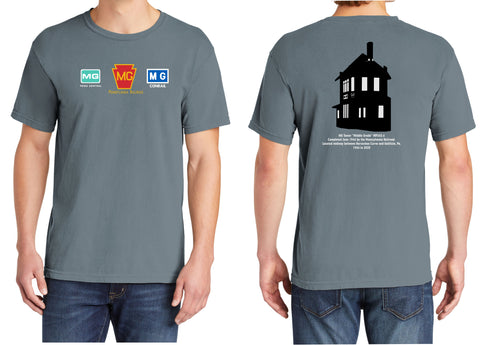
D&H Lackawanna Anthracite Faded Glory Shirt
D&H Lackawanna Anthracite Faded Glory Shirt
- Printed on Front
- 100% Cotton
- Shirt Color - Railroad Comfort Wash Hanes 100% Cotton
By the 1790s, industrializing eastern population centers were having increasing troubles getting charcoal to fuel their growing kilns, smithies, and foundries. As local timber was denuded, efforts to find an alternative energy source began. During a fuel shortage in Philadelphia during the War of 1812 an employee by the direction of industrialist Josiah White conducted a series of experiments and discovered a number of ways that 'rock coal' or anthracite could be successfully ignited and burned.[2] The fuel theretofore, had been seen more as a way to put out a fire, than a fuel to build one up, so its use also had to overcome a lot of prejudice,[3] White and his partner Erskine Hazard would found the Lehigh Coal and Navigation Company, creating the Lehigh Canal, and inspiring the exploitation of the anthracite deposits found by William Wurts around Carbondale, Pennsylvania which lead to the development of Scranton. The Mills of White and Hazard, and the regular large boatloads they proved they could supply had tipped the prejudice against anthracite to a wary plausibility in Philadelphia by 1822-1824[4] when the Lehigh was much damaged by flooding. The news of its rapid repair and restoration together with the fact anthracite stocks had for a time run down, but not out establishing the reliable sourcing[a] finished off the bias,[4] as did the beginning of mine output reaching the Delaware basin markets due to the long delayed completion of the Schuylkill Canal[b]
Wurts was a large thinker, and inspired his brothers to back forming a company to deliver the new High Tech fuel, anthracite to New York City by building an ambitious canal to connect the Hudson River and the Delaware River, and both to the coaldale coal deposits by chartering a Pennsylvania subsidiary corporation. the Delaware and Hudson Gravity Railroad to bring coal to the Delaware and the new canal. This cable railroad would grow in importance and become the far flung class I railroad, the Delaware and Hudson Railway.




